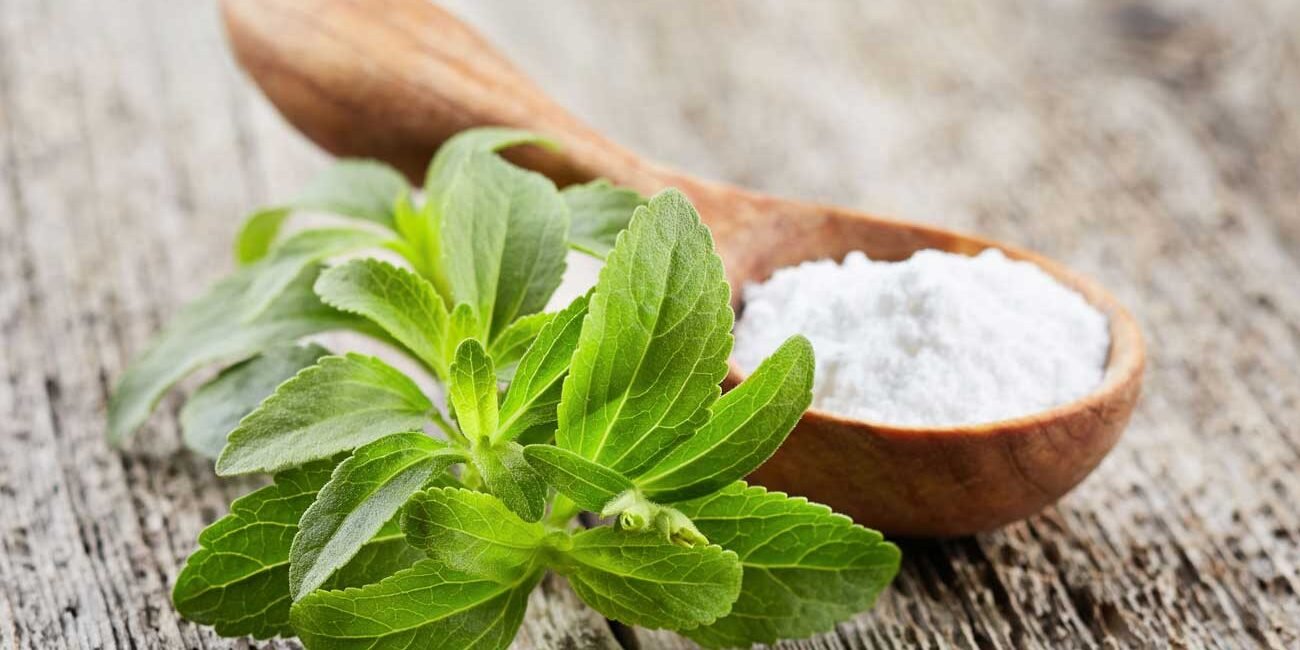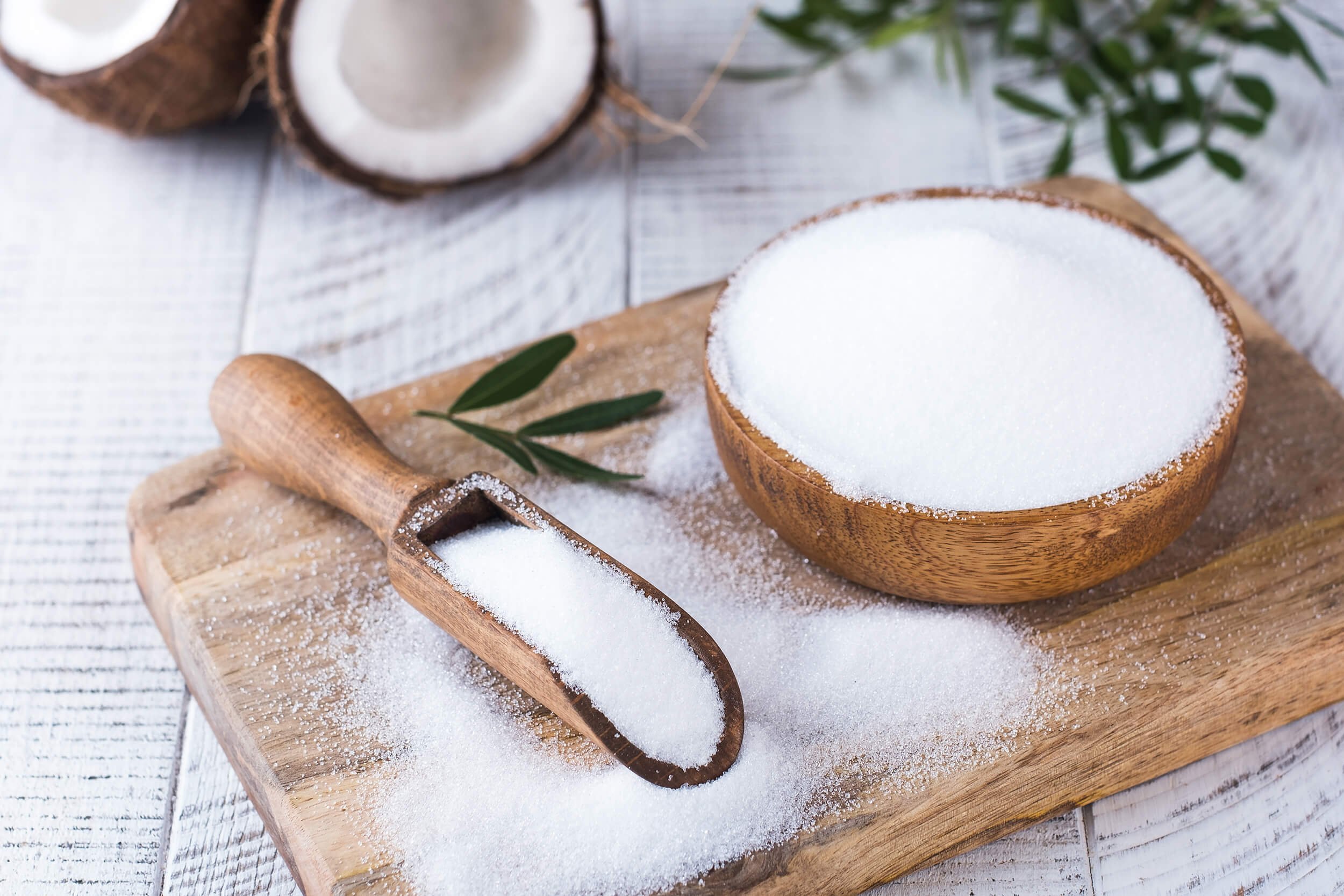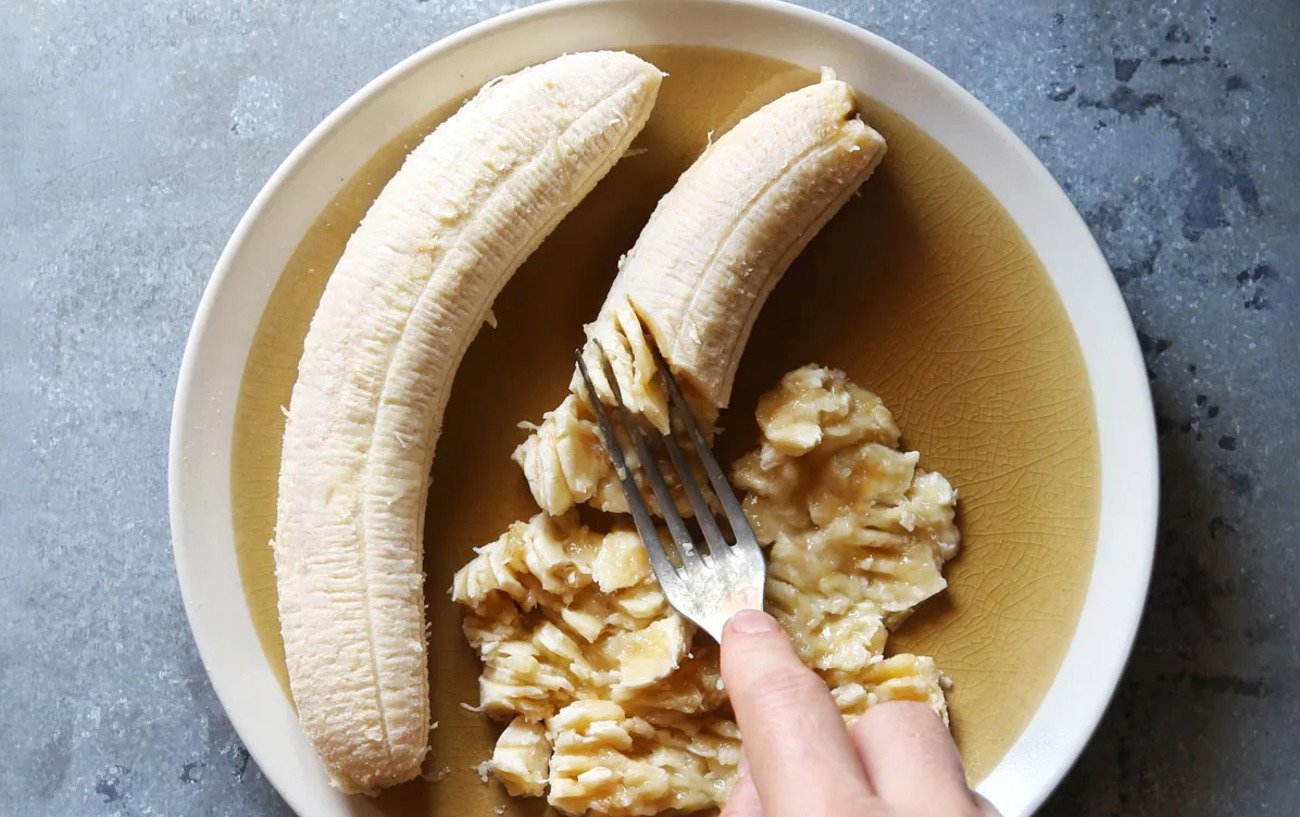Sweet Secrets
Baking Sugar-Free in the Texas Kitchen
Discover > Healthy Living Through Food > Sweet Secrets
Baking is a cherished tradition in Texas, where rich and decadent flavors are celebrated. However, with growing concerns about the impact of excessive sugar (how long does sugar last?) consumption on health, many individuals are seeking alternatives to traditional sugary treats.
In this article, we will explore the art of baking sugar-free in the Texas kitchen, uncovering the sweet secrets that allow you to indulge in guilt-free delights. From ingredient substitutions to innovative techniques, the world of sugar-free baking opens up a world of possibilities for creating delicious and healthy treats.
Understanding the Health Impact of Sugar
Before we delve into sugar-free baking, it's essential to understand the health impact of sugar consumption.
Sugar has long been a staple ingredient in the culinary world, adding sweetness and enhancing flavors in a wide range of foods and beverages. However, the excessive consumption of sugar has raised concerns among health professionals and researchers due to its potential negative effects on our health.
Let's explore the health impact of sugar and why it is essential to be mindful of our sugar intake.
1. Obesity and Weight Gain
One of the primary concerns associated with excessive sugar consumption is its contribution to obesity and weight gain. Sugary foods and beverages are often high in calories but low in nutritional value. When consumed in excess, these empty calories can lead to an energy imbalance, where the intake of calories exceeds the amount of energy burned through physical activity. Over time, this can result in weight gain and an increased risk of obesity.
Furthermore, sugar-sweetened beverages, such as sodas and fruit juices, are particularly problematic in terms of weight gain. These beverages are typically high in added sugars and are often consumed in large quantities. Liquid calories are less satiating than solid foods, leading to an increased overall calorie intake.
2. Diabetes and Insulin Resistance
Another significant health concern associated with sugar consumption is its impact on diabetes and insulin resistance. When we consume sugary foods, our bodies break down the sugars into glucose, which enters the bloodstream. In response, the pancreas releases insulin, a hormone that helps transport glucose from the bloodstream into the cells to be used as energy.
However, consistently high sugar intake can lead to insulin resistance, a condition in which the body's cells become less responsive to insulin. As a result, the pancreas produces more insulin to compensate for the reduced effectiveness. Over time, this can lead to the development of type 2 diabetes, a chronic condition characterized by elevated blood sugar levels.
3. Dental Health
Sugar consumption also plays a significant role in dental health. When we consume sugary foods and beverages, the bacteria in our mouths feed on the sugars and produce acids. These acids can erode tooth enamel, leading to tooth decay and cavities. Frequent consumption of sugary snacks or sipping on sugary beverages throughout the day can increase the risk of dental problems.
It's important to note that not all sugars have the same impact on dental health. Natural sugars found in whole fruits, for example, are less harmful to teeth due to the presence of fiber, which helps mitigate their effects. However, added sugars found in processed foods and beverages are more concerning in terms of dental health.
4. Heart Disease
Excessive sugar consumption has also been linked to an increased risk of heart disease. A diet high in added sugars can contribute to several risk factors for heart disease, including obesity, type 2 diabetes, high blood pressure, and inflammation.
Additionally, high sugar intake can lead to elevated triglyceride levels, a type of fat found in the bloodstream. Increased triglyceride levels, along with low levels of high-density lipoprotein (HDL) cholesterol (often referred to as "good" cholesterol), are associated with an increased risk of heart disease.
Understanding the health impact of sugar is crucial for making informed dietary choices. While sugar can provide a pleasurable taste experience, excessive consumption can contribute to various health issues, including obesity, diabetes, dental problems, and heart disease. By being mindful of our sugar intake and making efforts to reduce the consumption of added sugars, we can promote better overall health and well-being. Opting for natural sweeteners, choosing whole foods over processed ones, and adopting a balanced and varied diet are key steps toward achieving a healthier relationship with sugar and maintaining a nutritious lifestyle.
Designed to help readers get off the blood sugar roller coaster - without strict eating regimens or crazy rules to follow. Magic Foods features easy to prep recipes that can help restore energy, help restore the brain, and protect against disease.
Sugar Substitutes: Finding the Perfect Match
When it comes to sugar-free baking, choosing the right sugar substitutes is crucial. Here are some popular options:
Stevia
Stevia is a popular sugar substitute derived from the leaves of the Stevia rebaudiana plant. It is known for its intense sweetness while containing minimal calories, making it an attractive option for those looking to reduce their sugar intake. However, like any sugar substitute, there are both pros and cons to consider when using stevia. Let's explore them in more detail:
Advantages of Using Stevia:
Calorie-free or Low-calorie: One of the significant advantages of stevia is its minimal calorie content. Stevia extracts, such as stevia powder or liquid, are virtually calorie-free, making it an excellent choice for individuals trying to manage their weight or reduce their caloric intake.
Intense Sweetness: Stevia is incredibly sweet, often much sweeter than sugar. This means that only a small amount of stevia is needed to achieve the desired level of sweetness in recipes, reducing the overall sugar content of the dish. It can be a useful tool for individuals looking to cut back on sugar while still enjoying sweet flavors.
Glycemic Impact: Stevia has a negligible effect on blood sugar levels, making it suitable for individuals with diabetes or those aiming to regulate their blood sugar. Unlike sugar, stevia does not cause spikes in blood glucose levels, making it a valuable option for diabetic individuals or those following a low-glycemic diet.
Dental Health: Stevia does not contribute to tooth decay or cavities since it is not fermented by oral bacteria. Choosing stevia as a sugar substitute can help mitigate dental issues associated with sugar consumption.
Disadvantages of Using Stevia:
Bitter Aftertaste: One of the primary drawbacks of stevia is its potential for a bitter or licorice (how long does licorice last?)-like aftertaste. This taste can vary depending on the brand and the specific type of stevia used. Some people find the aftertaste off-putting and may need to experiment with different brands or forms of stevia to find one that suits their palate.
Flavor Profile: Stevia has a distinct flavor profile that may not be a perfect match for all recipes. While it works well in some dishes, such as beverages or certain desserts, it may not provide the same taste and texture as sugar in all applications. Some baked goods, for example, may require the bulk and moisture that sugar provides, which can be challenging to replicate with stevia alone.
Processing and Availability: Stevia is often processed and refined to extract the sweet compounds. Some individuals prefer to avoid highly processed foods and may prefer alternative natural sweeteners, such as whole fruits or raw honey. Additionally, availability may vary depending on the region, and certain forms of stevia may be more readily accessible than others.
Personal Preferences: Finally, the acceptability of stevia as a sugar substitute can vary among individuals due to personal preferences. Some people may enjoy the taste and benefits of stevia, while others may prefer alternative sweeteners or choose to moderate their overall sugar intake without using substitutes.
Erythritol
Erythritol (how long does erythritol last?) is a sugar alcohol commonly used as a sugar substitute. It has gained popularity due to its low calorie content, minimal impact on blood sugar levels, and tooth-friendly properties. However, like any sugar substitute, there are advantages and disadvantages to consider when using erythritol. Let's examine them in more detail:
Advantages of Using Erythritol:
Low Calorie Content: Erythritol is very low in calories compared to sugar. It provides about 0.2 calories per gram, which is approximately 6% of the calories found in an equal amount of sugar. This makes it an attractive option for individuals aiming to reduce their calorie intake or manage their weight.
Low Glycemic Impact: Erythritol has a minimal impact on blood sugar levels. It is not metabolized by the body and does not raise blood glucose or insulin levels, making it suitable for people with diabetes or those following a low-glycemic diet.
Tooth-Friendly: Unlike sugar, erythritol is not fermented by oral bacteria in the mouth, which means it does not contribute to tooth decay or cavities. This makes it a preferable option for maintaining dental health while still enjoying sweet flavors.
Digestive Tolerance: Erythritol is generally well-tolerated by most people. It is absorbed into the bloodstream and excreted in the urine without undergoing significant metabolism. Compared to other sugar alcohols, such as sorbitol or maltitol, erythritol is less likely to cause digestive issues like bloating, gas, or diarrhea, especially when consumed in moderate amounts.
Disadvantages of Using Erythritol:
Cooling Sensation: Erythritol has a cooling effect on the taste buds, which some individuals may find undesirable. This sensation is more noticeable when erythritol is used in larger quantities or in certain applications, such as frostings or candies. It may take some experimentation to find the right balance and minimize the cooling effect in recipes.
Limited Browning and Bulk: Erythritol does not caramelize or brown like sugar, which can affect the texture and appearance of certain baked goods. It also lacks the bulk and moisture that sugar provides, which may impact the structure and mouthfeel of recipes that rely on sugar's unique properties.
Taste and Flavor Profile: While erythritol is generally considered to have a taste profile similar to sugar, it may have a slightly different flavor and sweetness intensity. Some people may detect a mild, lingering aftertaste with erythritol, although it is generally less pronounced than with other sugar alcohols.
Cost and Availability: Erythritol can be more expensive than regular sugar, especially when compared to highly refined and processed sugar. Additionally, its availability may vary depending on the region and specific stores. However, with increasing demand for sugar substitutes, erythritol is becoming more accessible in many markets.
Monk Fruit
Monk fruit, also known as Luo Han Guo, is a natural sweetener derived from the fruit of the Siraitia grosvenorii plant. It has gained popularity as a sugar substitute due to its intense sweetness without adding calories or raising blood sugar levels. However, like any sugar substitute, there are advantages and disadvantages to consider when using monk fruit. Let's explore them in more detail:
Advantages of Using Monk Fruit:
Intense Sweetness: Monk fruit is significantly sweeter than sugar, with its extracts being about 150-200 times sweeter. This means that only a small amount of monk fruit is needed to achieve the desired level of sweetness, reducing the overall calorie and carbohydrate content of dishes or beverages.
Calorie-free and Low Glycemic Impact: Monk fruit contains no calories, making it an attractive option for individuals seeking to reduce their calorie intake or manage their weight. It also has a minimal impact on blood sugar levels, making it suitable for people with diabetes or those following a low-glycemic diet.
Natural Origin and Low Processing: Monk fruit extracts are derived from the fruit itself, making it a natural sweetener option. Some brands offer monk fruit sweeteners without any added fillers or artificial ingredients, providing a more wholesome choice compared to highly refined sugars or artificial sweeteners.
No Bitter Aftertaste: Unlike some other sugar substitutes, monk fruit is generally known for not having a bitter aftertaste. It can provide a clean, sweet flavor without any lingering unpleasant flavors.
Disadvantages of Using Monk Fruit:
Cost: Monk fruit sweeteners can be more expensive compared to regular sugar or other sugar substitutes. The extraction process and limited availability of monk fruit contribute to its higher price point.
Flavor Profile: While monk fruit is known for its intense sweetness, it does have a distinct flavor profile that may not be an exact match for the taste of sugar. Some individuals may detect a subtle fruity or herbal undertone that could impact the final flavor of certain recipes.
Availability and Formulations: Monk fruit sweeteners may not be as widely available as other sugar substitutes, and the range of formulations (powder, liquid, granules) can vary. Additionally, some brands may blend monk fruit with other sweeteners or bulking agents, so it's important to read labels if you prefer a pure monk fruit sweetener.
Baking and Texture: Monk fruit sweeteners do not behave exactly like sugar in baking applications. They may not contribute to browning or provide the same bulk and moisture that sugar offers. As a result, it may require some experimentation and recipe adjustment to achieve the desired texture and taste in baked goods.
Xylitol
Xylitol is a sugar alcohol commonly used as a sugar substitute. It has gained popularity due to its sweet taste, lower calorie content compared to sugar, and dental health benefits. However, like any sugar substitute, there are advantages and disadvantages to consider when using xylitol. Let's examine them in more detail:
Advantages of Using Xylitol:
Sweetness and Similar Taste: Xylitol provides a similar level of sweetness to sugar, making it an easy replacement in recipes. It can be used in a 1:1 ratio as a sugar substitute without significant alterations to taste.
Low Calorie Content: Xylitol contains fewer calories than sugar, with about 40% fewer calories per gram. This makes it an attractive option for individuals aiming to reduce their calorie intake or manage their weight.
Dental Health Benefits: Xylitol has been found to have dental health benefits. It does not promote tooth decay, as it is not fermented by oral bacteria. Additionally, xylitol has been shown to inhibit the growth of bacteria that cause cavities, reducing the risk of dental issues.
Low Glycemic Index: Xylitol has a minimal impact on blood sugar levels and insulin response. It has a low glycemic index, making it suitable for individuals with diabetes or those following a low-glycemic diet.
Disadvantages of Using Xylitol:
Digestive Issues: Xylitol can cause digestive issues, especially when consumed in large quantities. Some people may experience bloating, gas, diarrhea, or stomach discomfort as their bodies adjust to xylitol. It is recommended to introduce xylitol gradually and consume it in moderation.
Cooling Effect and Mouthfeel: Xylitol has a cooling effect on the taste buds, similar to other sugar alcohols. This cooling sensation can be noticeable, especially when consumed in larger amounts or in certain applications like candies or chewing gum. It can also contribute to a slightly different mouthfeel compared to sugar.
Potential Laxative Effect: Xylitol has laxative properties, and excessive consumption can lead to diarrhea or other gastrointestinal issues. It is important to moderate xylitol intake and be mindful of individual tolerance levels.
Toxic to Pets: Xylitol is highly toxic to dogs and some other pets. Ingesting even small amounts of xylitol can lead to severe health issues, including hypoglycemia, liver damage, and even death in dogs. It is crucial to keep xylitol-containing products away from pets and seek immediate veterinary care if accidental ingestion occurs.
Over consumption of sugar is spreading like a deadly epidemic among the young and old alike. Here’s a guide on how to survive the sugary sweet holiday season.
Balancing Flavors and Textures
When baking sugar-free, it's important to balance flavors and textures to achieve the desired results. Here are some tips to keep in mind:
Enhancing Sweetness
Apart from sugar substitutes, ingredients like vanilla extract, cinnamon, nutmeg (how long does nutmeg last?), and citrus zest can enhance the sweetness of your baked goods without adding sugar. Experiment with these flavors to find the perfect combination for your recipes.
Achieving Moisture
Sugar contributes to the moisture in baked goods. In sugar-free baking, it's essential to compensate for this by using moist ingredients like applesauce, mashed bananas, or Greek yogurt. These ingredients not only add moisture but also provide natural sweetness.
Texture Enhancers
Sugar affects the structure and texture of baked goods. To achieve similar results in sugar-free baking, ingredients like almond flour (how long does almond flour last?), coconut flour (how long does coconut flour last?), or ground flaxseed can be used to provide structure and moisture to your recipes.
ChipMonk Baking is a Housto-based keto and diabetic-friendly bakery that delivers the best low carb, sugar-free, and keto-friendly treats.
Recipe Modifications for Sugar-Free Texas Treats
Now that we have explored the basics of sugar substitutes and flavor balancing, let's discuss some specific recipe modifications for sugar-free treats in the Texas kitchen:
Classic Texas Pecan Pie
Replace the traditional corn syrup (how long does corn syrup last?) and white sugar with a combination of sugar substitutes like erythritol and stevia. Use a low-carb pie crust made with almond flour and butter, and enjoy a guilt-free slice of this beloved Texan dessert.
Decadent Chocolate Cake
Swap out the refined sugar with a combination of unsweetened cocoa powder, erythritol, and a small amount of liquid stevia. Experiment with almond flour or coconut flour as a base for a moist and chocolaty cake.
Texas-Style Cinnamon Rolls
Create a sugar-free cinnamon roll dough using almond flour, xylitol, and cinnamon. Instead of the traditional sugar-filled cinnamon filling, use a combination of stevia and cinnamon to achieve the perfect balance of sweetness and spice.
The products of Pineywoods Keto in Alto, Texas are all gluten-free, sugar-free, Keto and diabetic friendly, and most of all… guilt-free!
Conclusion
Baking sugar-free in the Texas kitchen doesn't mean sacrificing flavor and indulgence. With the right sugar substitutes, flavor enhancers, and recipe modifications, you can create delicious and healthier treats that satisfy your sweet tooth. Embrace the sweet secrets of sugar-free baking and explore a world of guilt-free delights in your Texas kitchen. Let your creativity soar as you adapt traditional recipes to suit your dietary needs and preferences, and enjoy the satisfaction of nourishing your body while still indulging in the joy of baking.
Made With Love has a variety of sweet and savory baked goods but they specialize in vegetarian, paleo, gluten-free, and sugar-free baked goods.









